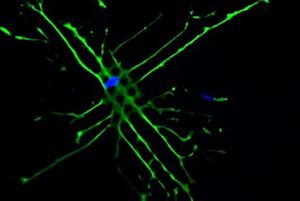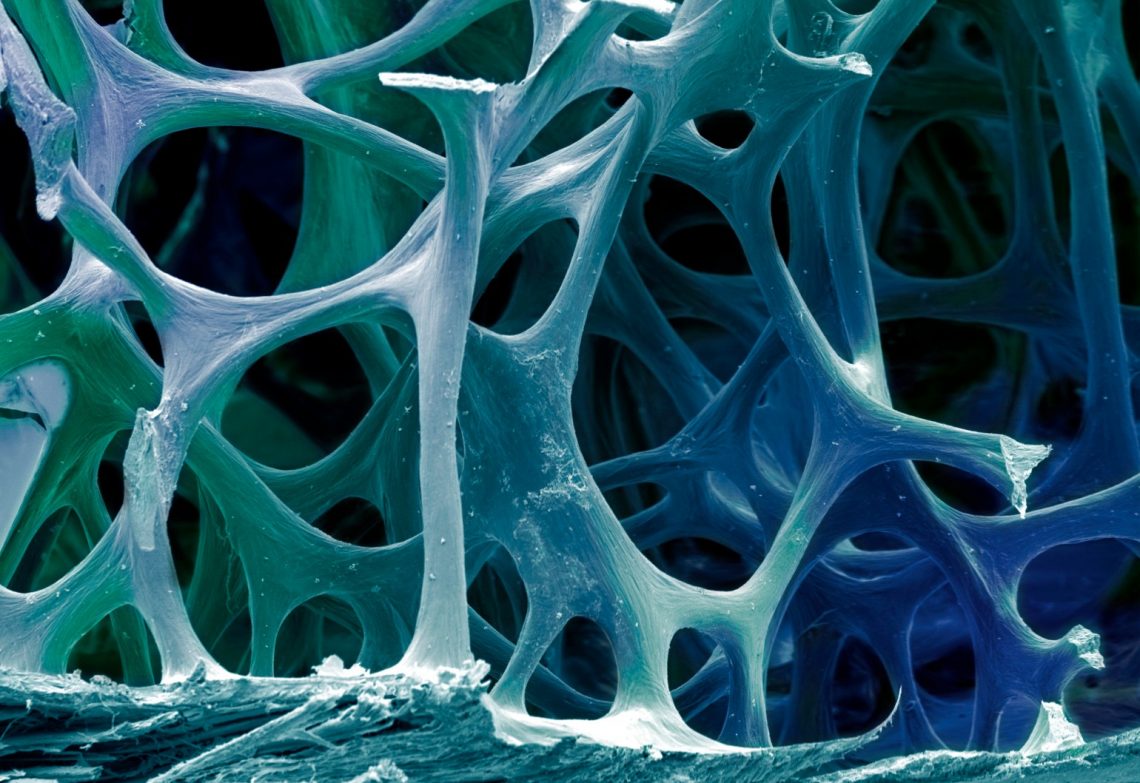An international team has engineered a new stem cells technique that could speed up recovery from bone replacement.
The multidisciplinary team, led by researchers from Monash University’s Faculty of Engineering, has created novel micropillars that can change the size, shape and nucleus of stem cells to “trick” them into becoming bone.
These novel micropillars are 10 times smaller than the width of a human hair and have the potential to revolutionise stem cell technology by giving researchers greater control over what the cells do in certain environments.
For now though, the research team focused on defining the topography of the pillars to create bone.
Tricking stem cells
Controlling stem cells is generally extremely difficult as they are heavily influenced by their environment, Dr Victor Cadarso from Monash University’s Department of Mechanical and Aerospace Engineering told create.
“What we’re doing is using these micro/nano features so we can make the cells believe they’re in a completely different environment than they are,” he said.
The stem cells are shaped by micropillar arrays developed using UV nanoimprint lithography. These pillars can shape the cell and the DNA within the nucleus which cause them to react in certain ways.
“We’re changing the mechanical environment of the cell and also the nucleus,” said Associate Professor Jessica Frith, at Monash University’s Department of Materials Science and Engineering.
“This causes the DNA inside that nucleus to be rearranged. And somehow, moving that DNA around makes the cell behave differently.”

The team was able to define the topography of the pillar size and identify a particular pattern that turns the cells into bone. This new method can produce four times as much bone compared to conventional methods.
“A really small change in the topographies has a really large influence on the cells,” Frith said. “So we did some screening and were able to identify the patterns that are really useful.”
Engineering the body
While the development of bone is a start, Cadarso said the team is working on identifying what patterns could be used to create other useful materials.
Frith echoed Cadarso’s sentiment and said the aim is to get to a point where their technique forms part of a medical device that could create a biological response in the body depending on what’s needed.
“This will have advantages over delivery of growth factors or proteins, which are really expensive, not very stable and have short half lives,” Frith said.
“We’re hoping by having an engineering-based solution it’s more scalable and cost effective, whilst also being powerful from a biological point of view.”
Future versions of the technique could help to improve stents and other implants and possibly even develop patterns that could create artificial tissues.
A multidisciplinary approach
The Monash University researchers worked in collaboration with the Melbourne Centre for Nanofabrication, CSIRO, the Max Planck Institute for Medical Research and the Swiss Federal Institute of Technology in Lausanne, Switzerland to develop the new technique.
Cadarso said he was thrilled to work with a team of international experts.
“Having the opportunity to work with really well established, world-leading researchers who are offering us mentoring and support has been fantastic, especially for me as a young researcher,” he said.
“It’s a real privilege to work with the people that we’re working with. But it’s been fun as well, and I definitely learned a lot,” adds Frith.
Of course, like many projects with multinational input over the past 12 months, COVID-19 threw a wrench in the team’s plans.
“Part of the plan that we had when we started this research was for the international collaborators coming to Australia, and visiting us here to work with us in the labs and send some of our PhD students to get trained by them,” Cadarso said.
The multidisciplinary nature of the team also sometimes made communication difficult.
“Suddenly you have hardcore engineers talking with hardcore biologists, sometimes it’s like they’re speaking completely different languages,” Cadarso said.
“So part of the process has been learning how to speak to each other, which is very interesting as well.”




How is the company that will develop this fantastic idea.
I’m not a scientist, and sometimes it’s over my head, however I find this fascinating and wonderful. Donated my bone/s scraps, after hip operation.